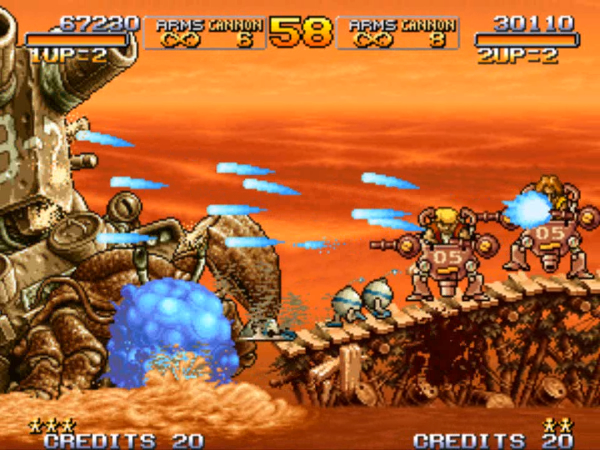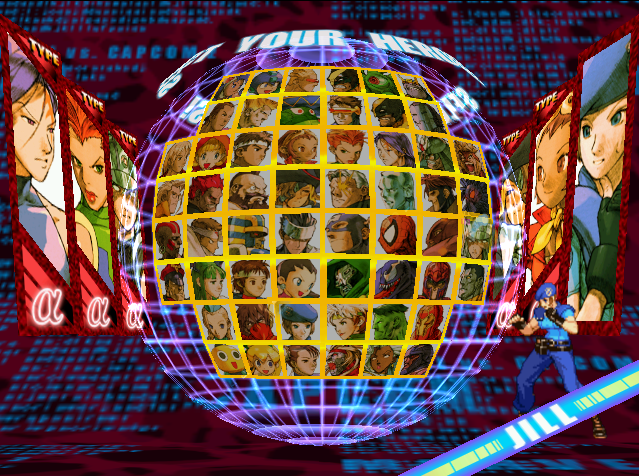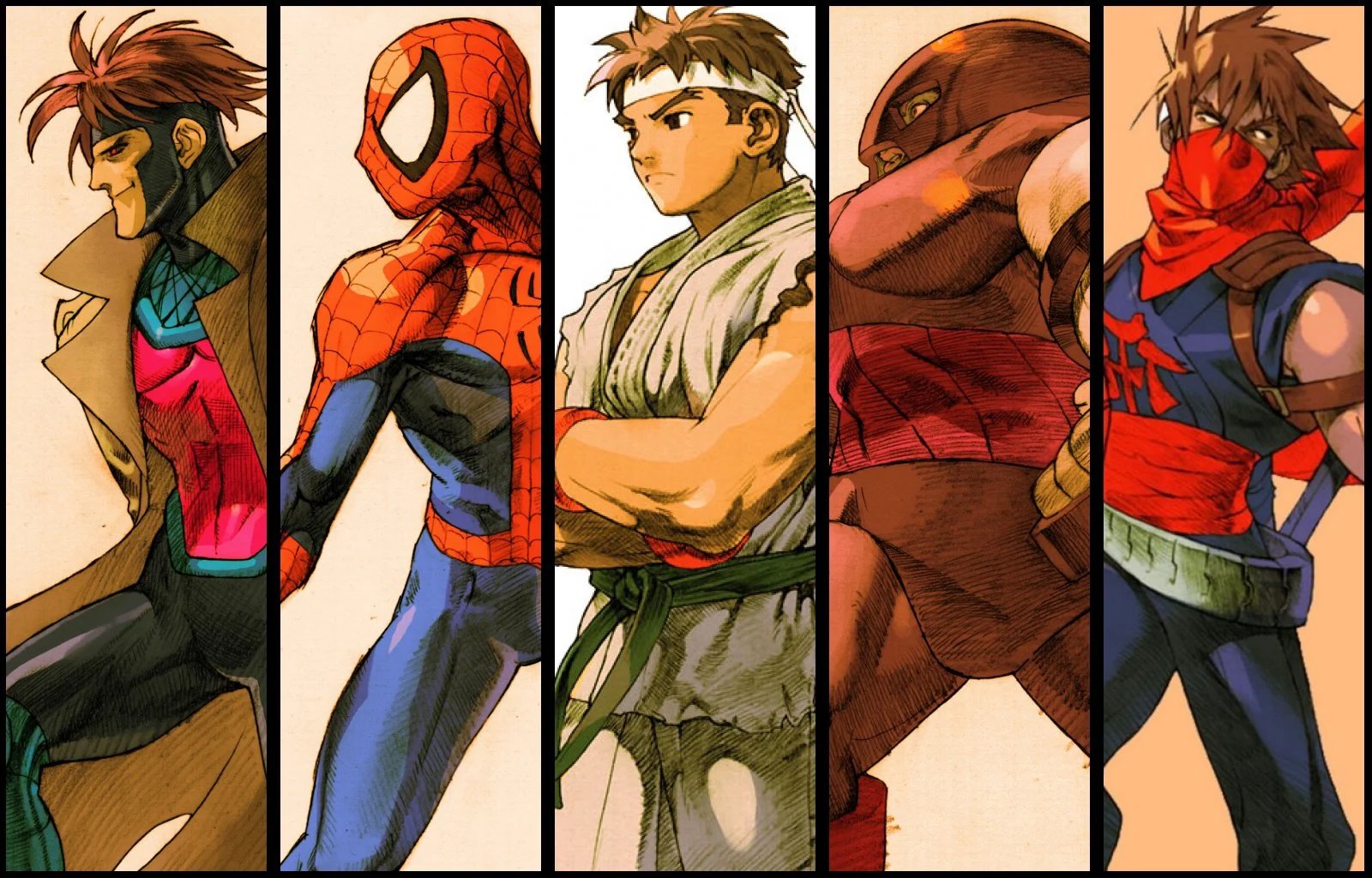At last we reach the turn of the millennium. The big triple-0. Home console gamers that survived the Y2K
virus were eating good. The Dreamcast
had a solid library built up with Resident Evil: Code Veronica now added, the
Nintendo 64 got Banjo-Tooie, a bigger and better sequel and all the Pokemon
fans like me were playing Gold and Silver while they went to the theater to
watch Pokemon the Movie 2000.
In arcades, things could’ve been better. Third Strike was Capcom’s last game on their
short-lived CPS3 board and at the time it didn’t get the kind of recognition it
gets today. Capcom put a higher focus on
console games, like the aforementioned Resident Evil: Code Veronica, meaning
arcade game production greatly slowed down and they largely switched
development from their own arcade systems to Sega’s NAOMI arcade board, which
made porting games to the Dreamcast easier, though it looks like they had just
one or two more games on their old reliable CPS2 system in the pipeline to put
out.
One of these games happened to be another game in which oursettle
their differences: Capcom vs. SNK. This
time it was actually in arcades and developed by Capcom instead of SNK, but as
much as I would like to include it, I don’t have any version of it nor does any
arcade have it. My local theater used to
have it many years ago and I remember thinking it was awesome, but that’s too
far back for a proper analysis. I’ll
make up for that with the sequel.
They weren’t out completely just yet though! Before the original SNK could go under, they
had a few games already in development they finished up and released. That means we only have 2 games from SNK this
year versus Capcom’s 3. That these
companies used to make 6-8 games a year previously shows how down bad arcade
gaming was at this point, but that doesn’t mean the games themselves are
bad. Capcom and SNK were still going at
it and now we will determine who was the best arcade company of the year 2000.
Power Stone 2(CAP): The first Power Stone felt like a proof
of concept. Power Stone 2 sees the
potential of that concept fully realized and then some. It takes the party game-like gameplay and
turns it into a real party with 4 players playing at once!
Thankfully the combat received some much-needed tune-ups as
well. There is no longer a kick button,
which is no big loss because the first one didn’t need it and it means NO MORE
DIVEKICKING! Throws are now a universal
one of holding the target above a player character’s head to throw them where
the player wants them to go. With 4
players to consider, super forms are not treated as much like the invincible
rage of the gods mode they were in the first game. There’s no longer a close-up when a player
powers up, the music doesn’t change and players in super form can now be hurt
and flinch rather than have their time limit lowered when taking damage. This is good because it means a player in
super form can’t plow their way through the other players that might not have
the space or opportunity to dodge like in the first game due to the chaos of 4
players.
Some of Power Stone 2’s strongest elements came with trade-offs,
however. Likely because of how much more
effort was put into the new ones, there are fewer stages than the first
game. Instead of being a globe-trotting
adventure, Power Stone 2 takes place in a mysterious floating castle where
space is warped and there are portals to different areas of the world inside,
kind of like Gruntilda’s Lair or Castlevania.
This means characters don’t have their own stages anymore, which takes
some of the personality out, as does the lack of endings. Because the game can be finished with any
combination of 1 to 4 characters, the ending is always the same. The final boss gets some fully voiced lines
in Japanese, but you get almost nothing for story outside of the initial
premise.
 |
| It's an impressively large 3D model for 2000. |
Everything that made Metal Slug X so good is taken further
in Metal Slug 3. The bosses are all
bigger and better than ever, there are now branching paths that lead to
completely different levels and it all ends in one of the grandest finales
you’ll ever see in a shoot ‘em up, all the while conveying a story purely
through visuals and no dialogue with chase scenes and unexpected developments I
dare not spoil for anyone who hasn’t played it.
The final mission is literally half of the game and mixes the level
design and gameplay up the entire way, never being anything less than
exhilarating.
 |
| "I am retreating to the one place uncorrupted by capitalism!" |
If the Metal Slug franchise ended with Metal Slug 3, I would
be fine with that because frankly, it’s a really hard act to follow. Metal Slug 3 is the 2000 game of the year and
if it’s not the best arcade shoot-em-up ever made, it’s in the top 5.
1944: The Loop Master(CAP): Another war shooter. You shoot at incoming ships and then you have
to destroy a massive war machine boss under a time limit. There are no surprises. The titular looping just means the plane is
invincible when it does its standard screen bomb attack and charged
attack. It’s by-the-numbers, just like
most of these Capcom war shooters. I can
feel my neck hurting from the whiplash playing this after Metal Slug 3.
The downs are that the soundtrack isn’t as consistently
stellar as 99, stages aren’t as striking and something about the story
presentation in this one doesn’t hit as hard to me. Also, while it’s pretty cool this game lets
you fight the Pringles guy Freddy Mercury Shura General Han, he’s probably the
least interesting final boss in the franchise.
The pros outweigh the cons for another excellent fighting
game that shouldn’t be missed, even if I think 99 is just a smidgen better.
Marvel vs. Capcom 2(CAP): Easily one of the most revered
games in fighting game history. I have a
lot of fond memories playing this game at Gameworks and gawking at the
ludicrous prices scalping losers tried to sell the console ports for when I was
young. On the surface level this is the
best of the best. 56 characters
officially beats out KOF 98 for the title of largest character selection ever,
bringing back almost everyone from the previous Marvel and Capcom collaboration
fighters with a few welcome newcomers, including original characters. I criticized the first Marvel vs. Capcom for
barely having enough characters to fill an arcade mode with teams of two and
now there’s more than enough for one with teams of 3.
Marvel vs. Capcom 2 takes full advantage of the NAOMI arcade
system and has striking animated 3D stages behind the 2D characters, the
contrast of which surprisingly doesn’t make the character sprites look like
cardboard cutouts fighting each other.
None of them are based on anything from either company this time, but
they’re pretty to look at and are accompanied by smooth jazz music like you
would hear in a casino. Marvel vs.
Capcom 2 has the best soundtrack of the year.
Some people think it's out of place, but I think the smoother music fits in well for the gameplay because
it’s weightless and flighty. All characters
can super jump on a whim and players are encouraged to do long combos over
landing powerful hits. A heavy punch in
this game on its own is nothing.
I wish I could say this made for one of the greatest
fighting games ever made, but unlike some of the other lauded games I’ve gone
over, this one is overrated as all hell and has some serious problems. There are 56 characters, but character balance
is fucked. There are several characters
that seem practically worthless with low-damage attacks and questionable
hitboxes while others are objectively better with no downside to using them,
not to mention all the infinites tier whores obsess over.
The game encourages long combos, but the problem is you seem
to need to know some kind of meta to use your character’s specific attacks
alongside your partner’s attacks to do anything beyond a 4 hit chain combo and
every character has a different command for launching an opponent in the air
for an air combo, which you need super speed to follow-up on even at the
slowest game speed. It is the
most newcomer-unfriendly game I’ve played yet, which wasn’t the case with the
first Marvel vs. Capcom. If you just
want to play around in MVC2 the game will kick your ass as punishment for not
using an objectively better character.
The expectation of the long combos also means everyone has way too much
health, which both reduces the gratifying impact of super moves and makes
fights drag on.
Very rarely do I get a KO victory in this game. The timer always runs out.
There isn’t even story or personality to latch onto
here. The story is that the new
character, sky pirate Ruby Heart, is trying to defeat a great calamity called
Abyss and that’s all we get. Abyss is a
great final boss, but there’s only one ending, understandably. Every character has their own character
portrait by veteran Capcom artist Bengus, who must’ve worked overtime for 56
characters, but there are no win quotes or flavor beyond what’s shown in the
actual fighting, making it even harder to get into what’s on the screen.
Marvel vs. Capcom 2 is at its absolute best when playing
with friends. With this many characters,
colorful stages and energetic music, this is exactly the game I remember
playing with other people at the arcade.
Playing it years later and after having played dozens of fighting games
that have come before it, I see it’s not a timeless cornerstone of fighting
games like people make it out to be.
The Winner
There weren’t as many games to take into consideration this time, but it was still tricky to rank the games with the exception of the unremarkable 1944. As much as I went on about its problems, Marvel vs. Capcom 2 is the best fighting game of the year, beating KOF 2000, which itself has more content and mechanics than Power Stone 2. The decisive game for declaring the winner is Metal Slug 3. It stands above every shooter game that came before it and it’s such a complete and content-rich package that it’s a better experience to play than anything else for the year. Had Power Stone 2 come with a more stages and maybe a little more story, Capcom might’ve barely edged it out by having the second and third best arcade games of the year to make up for SNK having THE best. Capcom didn't quite meet that height, so SNK is the winner of 2000.Admittedly, if I am ever able to play the first Capcom vs.
SNK, this decision might be overturned.
Trust me, you’re going to have to get used to a lack of games moving
forward.








No comments:
Post a Comment